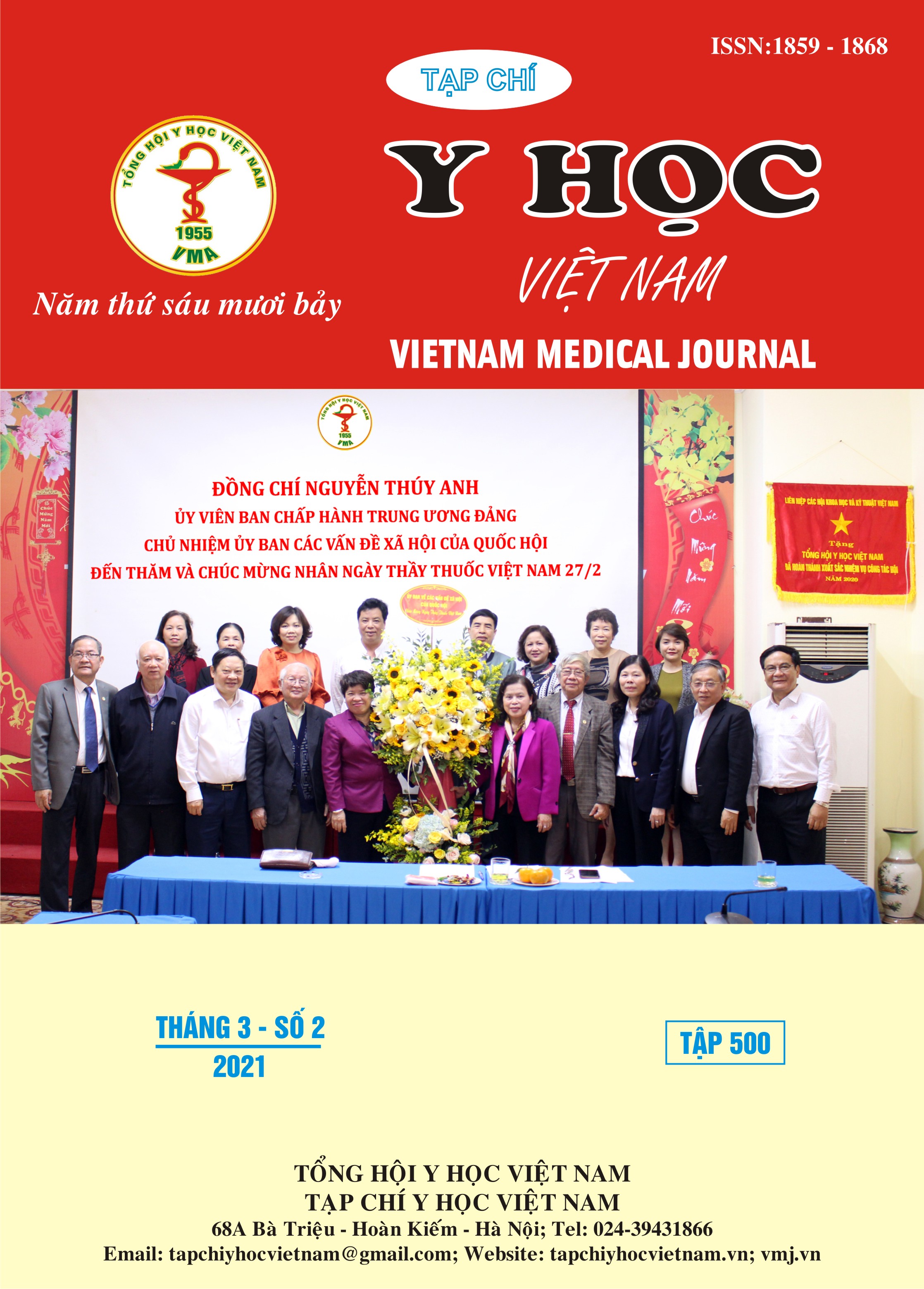FACTORS AND OUTCOMES RELATED TO THE VERY SEVERE HYPERTRIGLYCERIDEMIA IN PATIENTS WITH HYPERTRIGLYCERIDEMIA INDUCED ACUTE PANCREATITIS
Main Article Content
Abstract
Objectives: The aims of this study were to assess the relationship between clinical factors, biochemical data and outcomes in patients with hypertriglyceride induced acute pancreatitis (HTGP) and the grades of hypertriglyceridemia (HTG) by Endocrine Society 2010. Methods: We retrospectively analyzed a total of 132 patients with HTGP from January 2017 to May 2019 at Cho Ray Hospital. HTGP patients were divided into two groups according to the grades of HTG by Endocrine Society: very severe HTG (³2000 mg/dL) and severe HTG (1000 – 1999 mg/dL). Serum TG levels measured within 48 hours of admission. We analyzed the differences between two groups of patients, including general infomation, clinical characteristics, biochemical data and outcomes. Results: Comparing with the severe HTG group, the mean of hemoglobin (Hb) had significantly higher level in the very severe HTG group (p=0.017). There were significant differences in level of prothrombin time (PT) (p=0.001), creatinine (p=0.011) and the grade of creactive protein at 48 hours after admission (CRP48) (p=0.019) between the two groups. The prevalence of history of dyslipidemia was significantly high in the very severe HTG group (p=0.022). Multivariate analysis demonstrated that history of dyslipidemia and level of CRP48 were statistically significant relating with the very severe HTG (p<0.05). Conclusions: In patients with HTGP, there were significantly higher of Hb and lower of PT and creatinine in patients with the very severe HTG as compared to the severe HTG. According to the multivariate analysis, history of dyslipidemia and levels of CRP48 were significant related to the very severe HTG (p<0.05).
Article Details
Keywords
acute pancreatitis, hypertriglyceridemia induced acute pancreatitis, very severe hypertriglyceridemia
References
2. Banks P. A. et al. Classification of acute pancreatitis—2012: revision of the Atlanta classification and definitions by international consensus. Gut. 2013; 62 (1), pp. 102.
3. Leppaniemi A. et al. 2019 WSES guidelines for the management of severe acute pancreatitis. World J Emerg Surg. 2019; 14, pp. 27.
4. Scherer J. et al. Issues in hypertriglyceridemic pancreatitis: an update", J Clin Gastroenterol. 2014; 48 (3), pp. 195-203.
5. Wang S. H. et al. Relationship between Plasma Triglyceride Level and Severity of Hypertriglyceridemic Pancreatitis. PLoS One. 2016; 11 (10), pp. e0163984.
6. Vipperla K. et al. Clinical Profile and Natural Course in a Large Cohort of Patients With Hypertriglyceridemia and Pancreatitis. J Clin Gastroenterol. 2017; 51 (1), pp. 77-85.
7. Hoàng Đức Chuyên. Nghiên cứu đặc điểm lâm sàng, cận lâm sàng và điều trị viêm tụy cấp do tăng triglyceride. Trường Đại học Y Hà Nội. 2012.
8. Huỳnh Tấn Đạt. Vai trò của tăng Triglyceride trong viêm tụy cấp. Đại học Y Dược Thành Phố Hồ Chí Minh. 2012.


